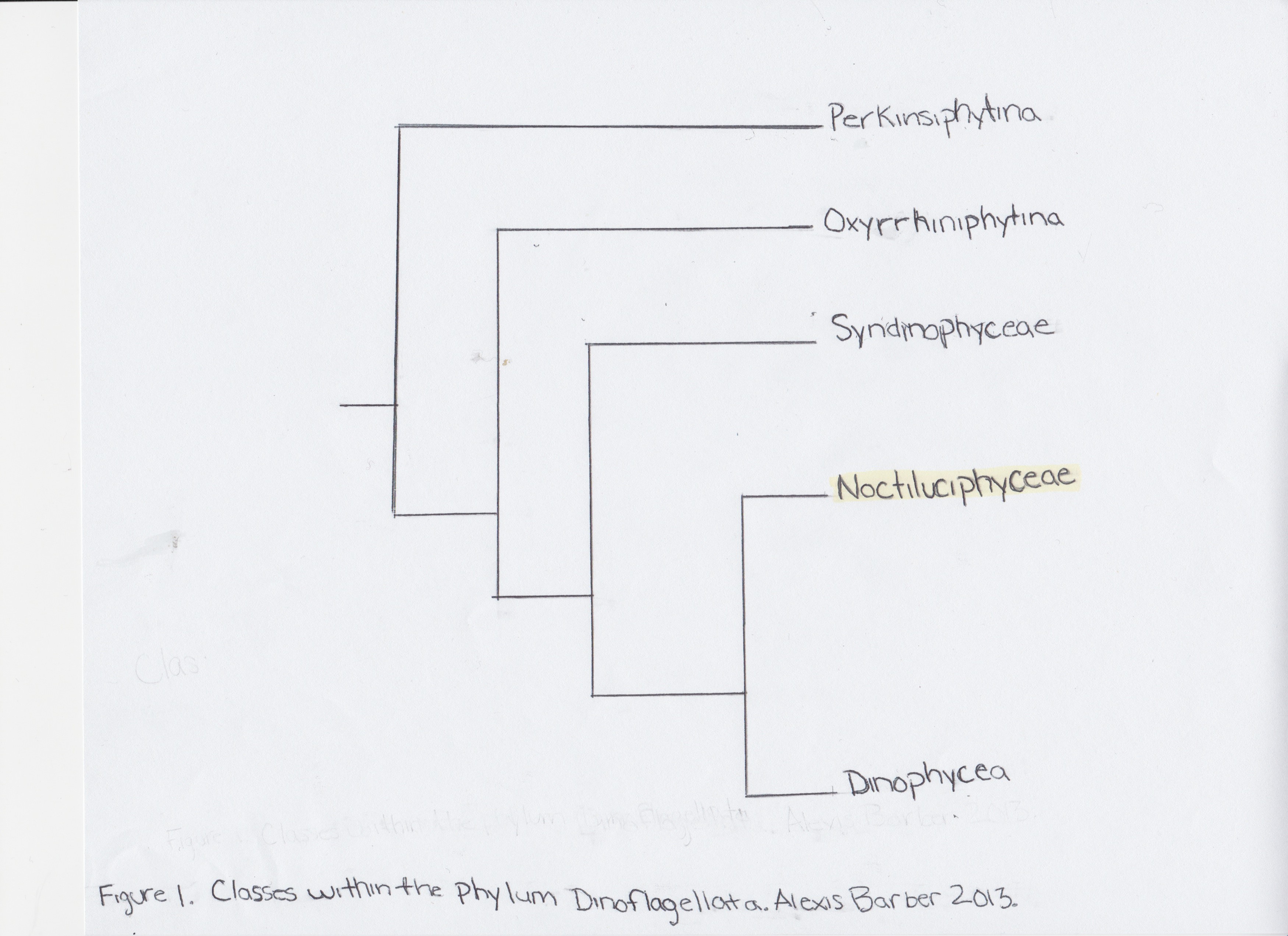Classification
Noctiluca scintillans
Domain: Eukarya- N. scintillans belongs to the
eukaryotes because its cells have a true nucleus. Other
examples of Eukarya include very diverse organisms that look
completely different including
Lama glama,
Chlamydosaurus kingii, and
Phytophthra infestans.
Kingdom: Protista- Organisms in this kingdom are mostly
unicellular, but some are multicellular or colonial. They can be
hetertrophic or autotrophic and sexual or asexual. These are
eukaryotic organisms that are not plants, animals or fungi and
therefore do not fit into any other kingdom. Some other
organisms in this kingdom are
Cyanidium caldarium, a red algae, and
Diatoms
(Tutor Vista 2013).
Phylum: Dinoflagellata- Dinoflagellates are unicellular
organisms with biflagellated cells. This group consists of both
heterotrophic and autotrophic organisms (Holt, J.R. 2013).
Class: Noctiluciphyceae- Organisms in this class are
dinoflagellates with a large free-living cell inflated by
vacuoles. Another organism in this class is
Kofoidinium velleloides
(Tree of Life 2012).
Order: Noctilucales- In N. scintillans, the mature
cell is diploid and it shows gametic meiosis. The cells of these
organisms are very large and buoyant This puts them in this
order(Tree of Life 2012).
Family: Noctiluaceae- Organisms in this family are
characterized by a highly buoyant, motile cell with a flagellum
and a feeding tentacle (Tree of Life 2012).
Genus: Noctiluca- Organisms in this genus are bioluminescent
and are phagotrophic (Tree of Life 2012).
Species: Noctiluca scintillans
In Latin, Noctiluca means “shine by night” and scintillans
means “sparkling” (Ocean 2012).
____________________________________________________________________________________________________
Classification was interesting, but lets see where Noctiluca
scintillans can be found in the
Habitat section. If you would like to start fresh on the
website, please go to the
Homepage.